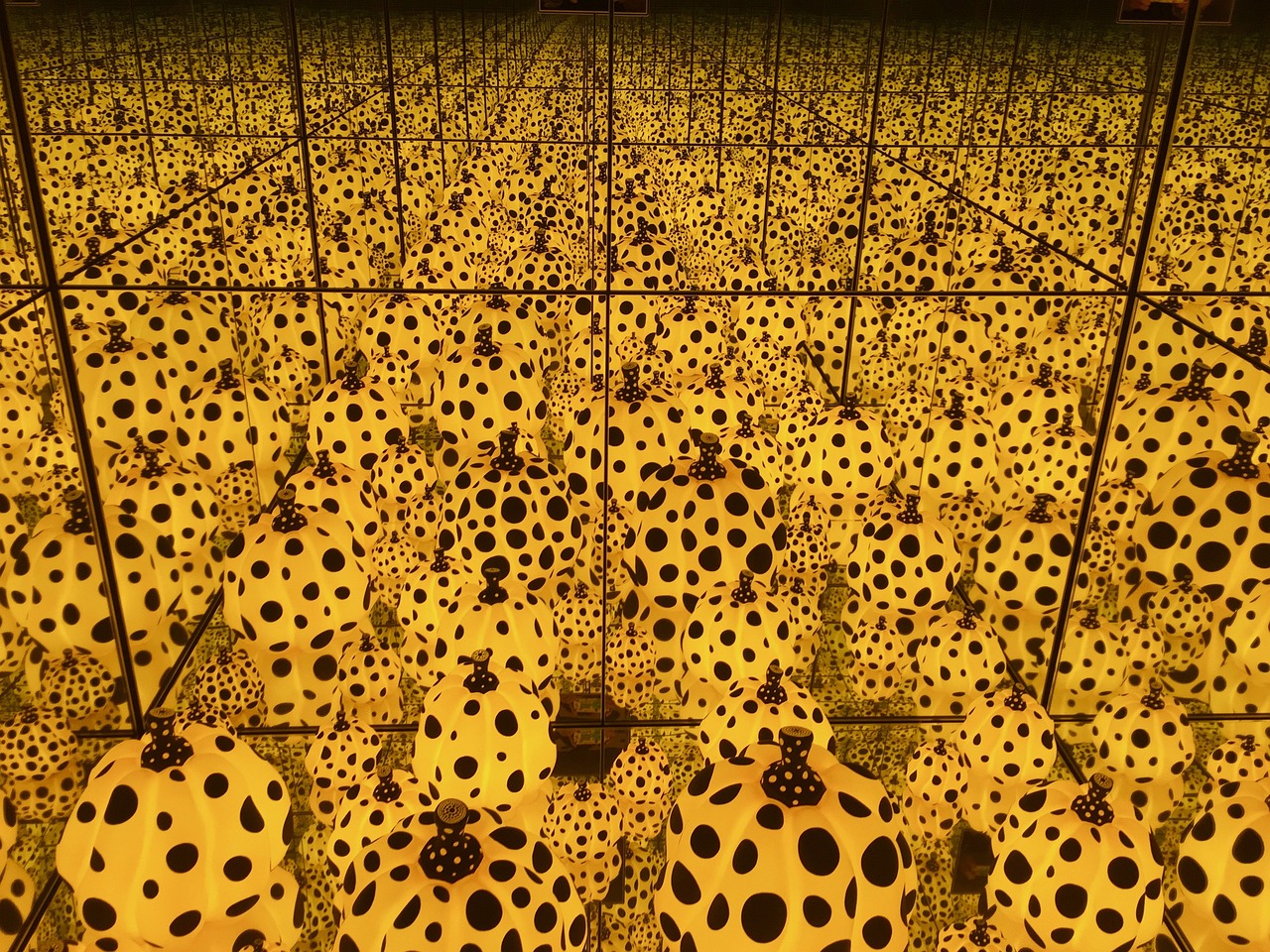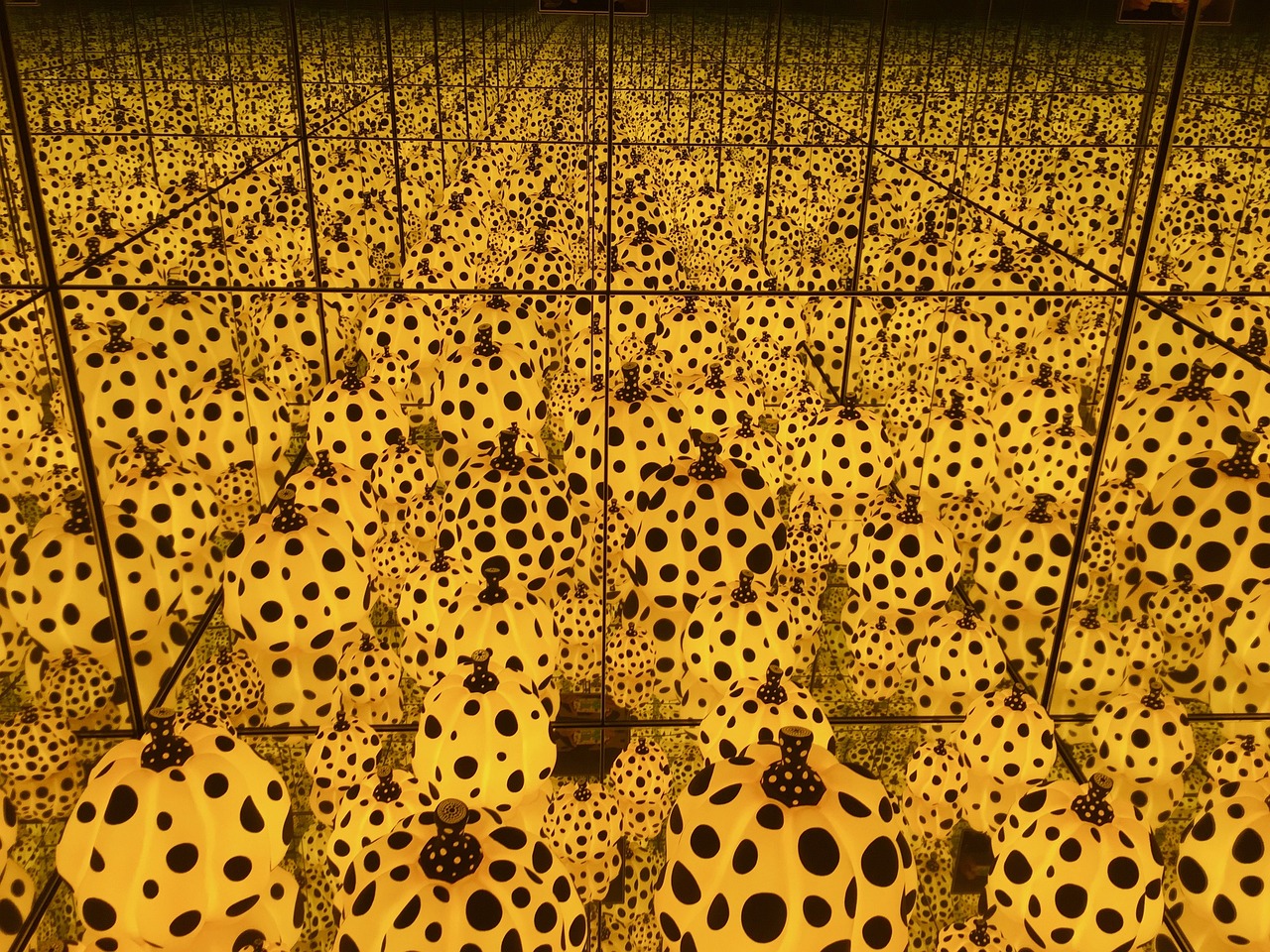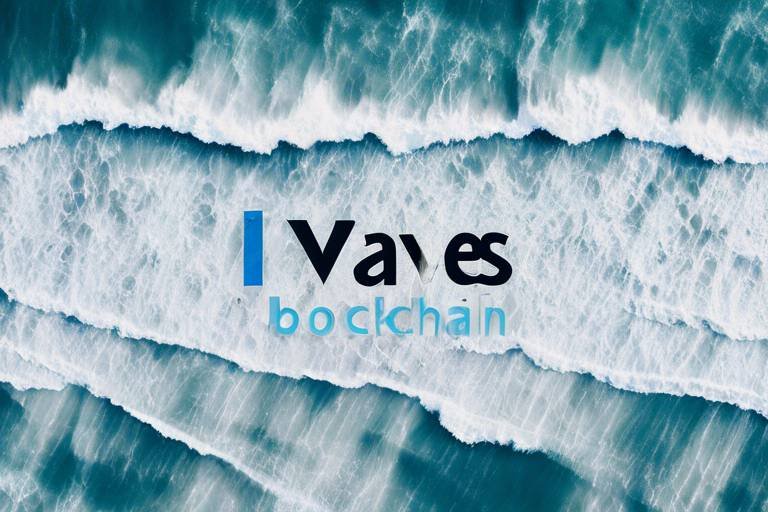Kusama - The Wild Child of Polkadot
Kusama is often referred to as the **"wild child"** of the Polkadot ecosystem, and for good reason. Launched as an experimental network, it serves as a proving ground for developers to test out their ideas in a live environment before they go on to the more stable and structured Polkadot network. Think of Kusama as the **playground** where developers can swing high and slide fast, all while pushing the boundaries of what blockchain technology can achieve. This unique duality not only enhances innovation but also offers a unique insight into the potential future of decentralized applications (dApps) and the broader blockchain space.
One of the most compelling aspects of Kusama is its **scalable multi-chain architecture**. This design allows multiple blockchains to operate in parallel, sharing security while maintaining their unique functionalities. Imagine a bustling city where each neighborhood has its own character but is connected through a robust public transport system. Similarly, Kusama's architecture fosters a vibrant ecosystem where various projects can thrive, experiment, and evolve. This flexibility is crucial, especially in the fast-paced world of blockchain, where the ability to adapt and innovate can mean the difference between success and obscurity.
Moreover, Kusama's architecture is not just about **experimentation**; it's about **real-world application**. Developers can dive into creating decentralized finance (DeFi) applications, non-fungible tokens (NFTs), and other innovative solutions, all while gathering valuable feedback from the community. This iterative process is akin to a chef perfecting a recipe—each taste test leads to adjustments that refine the final dish. In this way, Kusama empowers developers to create cutting-edge solutions that can later be implemented on Polkadot with greater confidence.
In summary, Kusama stands out as a **dynamic and experimental** platform within the blockchain ecosystem. Its architecture not only promotes rapid innovation but also provides a real-world testing ground for projects that could shape the future of decentralized technology. As we delve deeper into the key features and use cases of Kusama, it becomes clear that this network is not just a sidekick to Polkadot; it is a **vibrant entity** in its own right, driving the evolution of blockchain technology.
- What is Kusama? Kusama is an experimental multi-chain network that operates alongside Polkadot, designed for rapid innovation and testing of new features.
- How does Kusama differ from Polkadot? While both networks share a similar architecture, Kusama is intended for experimentation and quicker iterations, whereas Polkadot focuses on stability and security.
- What types of projects can be built on Kusama? Kusama supports a variety of projects, including decentralized finance (DeFi) applications, non-fungible tokens (NFTs), and other innovative solutions.
- Can I participate in Kusama's governance? Yes, Kusama employs an on-chain governance model that allows stakeholders to propose and vote on changes, actively involving the community in decision-making.

[Understanding Kusama's Architecture]
Kusama is often referred to as the wild child of Polkadot, and for good reason! Its architecture is built for speed and flexibility, allowing developers to experiment and innovate at a pace that traditional blockchain networks simply can't match. Imagine a sandbox where you can build and break things without the fear of permanent consequences; that’s the essence of Kusama. This scalable multi-chain network operates alongside Polkadot, providing a real-world testing ground for new ideas and features that can later be integrated into the more stable Polkadot network.
At the core of Kusama's architecture is its ability to support parachains—independent blockchains that run in parallel to one another. This setup allows for a high degree of scalability and efficiency, as multiple transactions can occur simultaneously across different chains. Think of it like a busy highway with multiple lanes, where each lane can accommodate its own flow of traffic without causing jams. This is crucial for applications that demand high throughput, such as decentralized finance (DeFi) platforms and gaming applications.
Another fascinating aspect of Kusama’s architecture is its governance model. Unlike traditional blockchains where changes can be slow and cumbersome, Kusama allows stakeholders to propose and vote on modifications in real-time. This on-chain governance model fosters a sense of community and ownership among users, ensuring that the network evolves in a way that reflects the collective desires of its participants. It’s like a democratic society where everyone has a voice, and decisions are made based on the majority's will.
Moreover, Kusama's rapid innovation cycle is supported by its flexible infrastructure. Developers can deploy their projects quickly and receive immediate feedback from the community. This iterative process not only accelerates development but also enhances the quality of the projects launched on the network. In essence, Kusama serves as a launchpad for groundbreaking blockchain solutions, where ideas can be tested and refined before they make their way to the more formalized Polkadot environment.
To summarize, Kusama's architecture is characterized by:
- Scalability: Through its use of parachains, Kusama can handle a significant number of transactions simultaneously.
- Real-time Governance: Stakeholders can actively participate in decision-making processes.
- Rapid Innovation: Developers can quickly test and iterate on their projects.
This unique combination of features makes Kusama not just a playground for developers, but a vital component of the broader blockchain ecosystem. As it continues to grow and evolve, it will undoubtedly play a crucial role in shaping the future of decentralized applications and blockchain technology as a whole.

[Key Features of Kusama]
Kusama is not just another blockchain; it's a dynamic playground for developers and innovators. One of its standout features is its fast block times, which typically clock in at around 6 seconds. This speed is crucial for applications that require real-time interactions, making Kusama a prime choice for projects that need to operate at lightning speed. Imagine trying to catch a bus that only comes every few minutes; you wouldn't want to miss it, right? That's how important quick transactions are in the blockchain world.
Another significant advantage of Kusama is its low transaction fees. While many blockchains can charge hefty prices for transactions, Kusama keeps costs down, allowing developers to experiment without breaking the bank. This affordability opens the door for smaller projects and startups to enter the blockchain space without the fear of exorbitant costs. Think of it as a low-cost entry ticket to a concert where you can enjoy all the music without worrying about your wallet.
Kusama also boasts a flexible governance model that promotes community involvement. This model is essential for ensuring that the platform evolves in a way that aligns with the community's needs. Stakeholders can propose changes and improvements, which are then voted on by the community. This democratic approach fosters a sense of ownership and responsibility among users, making them more invested in the network's success. It's like being part of a town hall meeting where everyone gets a voice, and the decisions reflect the collective will.
The governance model of Kusama is truly unique, enabling real-time decision-making that empowers users to actively shape the platform's future. This is achieved through on-chain governance, which allows for immediate implementation of community-approved changes. By leveraging this model, Kusama ensures that it remains adaptable and responsive to the ever-changing landscape of blockchain technology.
With on-chain governance, Kusama users can propose and vote on changes without needing to rely on external authorities. This real-time engagement is crucial for fostering a vibrant ecosystem. It's like having a direct line to the decision-makers, where you can voice your opinions and see them put into action almost immediately. This level of transparency and participation is rare in traditional systems and is a hallmark of Kusama's innovative spirit.
Kusama employs several innovative voting mechanisms, such as referenda, to facilitate community engagement. These referenda allow users to vote on various proposals, ensuring that all voices are heard in the decision-making process. This participatory approach not only strengthens the community but also enhances the overall governance of the network. It's akin to a democratic election where every vote counts, and the outcome reflects the will of the people.
In conclusion, Kusama's key features—fast block times, low transaction fees, and a robust governance model—make it an appealing platform for developers and projects. It serves as a testing ground where innovation thrives, and the community plays a pivotal role in shaping its future. As we continue to explore the depths of what Kusama has to offer, it becomes increasingly clear that this platform is not just a sidekick to Polkadot; it's a vibrant ecosystem in its own right, paving the way for the next wave of blockchain innovation.

[Governance Model]
The governance model of Kusama is one of its most fascinating aspects, acting as the backbone of its dynamic ecosystem. Unlike traditional blockchain networks that often rely on a centralized authority to make decisions, Kusama embraces a more democratic approach. This model empowers its community members, allowing them to actively participate in the evolution of the network. Think of it as a vibrant town hall meeting where everyone has a say; this not only fosters a sense of ownership but also encourages innovation and responsiveness to community needs.
At the heart of Kusama's governance is the concept of on-chain governance, which enables real-time decision-making. This means that changes to the network can be proposed, debated, and voted on directly by the stakeholders. Imagine being part of a living organism that adapts and evolves based on the collective input of its members. This real-time adaptability is crucial in the fast-paced world of blockchain technology, where new ideas and challenges emerge daily.
Moreover, Kusama employs a variety of voting mechanisms to ensure that all voices are heard in the decision-making process. These mechanisms include:
- Referenda: Community members can propose changes, and if enough support is garnered, these proposals are put to a vote.
- Council Votes: A council of elected members can also propose changes, streamlining the process for urgent matters.
- Stakeholder Voting: All token holders have the power to vote, ensuring a truly decentralized approach.
This unique governance structure not only enhances transparency but also builds trust within the community. By allowing stakeholders to influence the direction of the network, Kusama cultivates a sense of belonging and commitment among its users. It's like being part of a collaborative art project where each brushstroke contributes to the final masterpiece. The more engaged the community is, the better the outcomes for everyone involved.
As Kusama continues to evolve, its governance model will likely adapt as well, reflecting the changing needs and aspirations of its community. This makes Kusama not just a platform for experimentation but also a living, breathing ecosystem that thrives on collaboration and innovation.

[On-Chain Governance]
On-chain governance is one of the standout features of Kusama, providing a dynamic and responsive framework for decision-making within the network. This innovative approach allows stakeholders to actively participate in the evolution of the platform, fostering a sense of community ownership and collaboration. In a world where centralized decision-making often stifles innovation, Kusama flips the script by empowering its users to have a direct say in the platform's future.
Imagine a bustling town hall meeting where every resident has a voice. That’s precisely how Kusama operates; it encourages its community to engage in discussions and propose changes that can be voted on in real-time. This means that if a developer has a groundbreaking idea or if a user identifies a critical issue, they can bring it to the table and rally support. The result? A network that evolves based on the needs and desires of its users, rather than a distant boardroom making decisions behind closed doors.
One of the key aspects of on-chain governance in Kusama is the use of referenda. These are essentially proposals put forth by community members that can be voted on by all stakeholders. When a proposal is submitted, it goes through a series of stages, including discussions and a voting period, ensuring that every voice can be heard before a decision is made. This process not only democratizes governance but also helps to foster a vibrant ecosystem where innovation can flourish.
To illustrate how this governance model works, let’s break down the process:
- Proposal Submission: Any user can submit a proposal for changes or improvements to the network.
- Discussion Phase: Community members can discuss the proposal, share feedback, and suggest modifications.
- Voting Period: Once the discussion phase concludes, the proposal enters a voting period where stakeholders can cast their votes.
- Implementation: If the proposal garners enough support, it is implemented, directly impacting the network.
This model not only enhances transparency but also builds trust among users, as they can see their contributions leading to tangible changes. Moreover, it creates a robust feedback loop where the community can continuously adapt and refine the platform based on real-time insights and experiences.
In summary, Kusama's on-chain governance is a game-changer in the blockchain space. It transforms the way decisions are made, ensuring that the network remains agile and aligned with the community's vision. As more projects and developers flock to Kusama, this governance model will likely set a precedent for future blockchain ecosystems, demonstrating the power of community-driven innovation.
- What is on-chain governance? On-chain governance refers to the decision-making process that occurs directly on the blockchain, allowing stakeholders to propose, discuss, and vote on changes to the network.
- How does on-chain governance benefit Kusama? It empowers the community to have a direct say in the platform's development, fostering innovation and ensuring that the network evolves according to user needs.
- Can anyone participate in the governance process? Yes, any user can submit proposals and participate in discussions and voting, making it a truly democratic process.

[Voting Mechanisms]
The voting mechanisms employed by Kusama are nothing short of revolutionary, embodying the very essence of community-driven governance. Imagine a system where every stakeholder has a voice, where decisions are made not in the shadows but in the light of collective agreement. This is the reality that Kusama strives to create through its innovative voting processes. At the heart of this system lies the concept of referenda, which allows users to propose changes or new features and then vote on them. This direct form of democracy ensures that the network evolves in a way that reflects the desires and needs of its community.
One of the standout features of Kusama's voting mechanisms is the real-time engagement it fosters. Unlike traditional governance models that can be slow and cumbersome, Kusama's approach allows for swift decision-making. When a proposal is put forth, stakeholders can vote almost immediately, creating a dynamic environment where ideas can be tested and implemented rapidly. This agility is crucial in the fast-paced world of blockchain technology, where innovation is the name of the game.
Moreover, Kusama's voting process is designed to be inclusive. Every KSM holder has the opportunity to participate, which not only empowers individuals but also strengthens the community as a whole. This inclusivity is vital, as it ensures that a diverse array of opinions and ideas are considered before any significant changes are made. To illustrate this point, consider the following table, which outlines the key aspects of Kusama's voting mechanisms:
| Feature | Description |
|---|---|
| Referenda | Community members can propose changes and vote on them. |
| Real-Time Voting | Quick decision-making process allowing for immediate community engagement. |
| Inclusivity | All KSM holders can participate in the voting process. |
| Transparency | Voting results and proposal discussions are visible to all stakeholders. |
In addition to referenda, Kusama also implements a system of voting weights, where the influence of a user's vote is proportional to the amount of KSM they hold. This mechanism ensures that those who have a greater stake in the network have a more significant say in its governance, while still allowing smaller holders to contribute to the conversation. It’s like having a group project where everyone can pitch in, but those who invest more effort (or in this case, resources) get a little more influence over the final outcome.
Ultimately, Kusama's voting mechanisms are designed to create a vibrant, engaged community that can adapt and grow in tandem with the ever-evolving landscape of blockchain technology. By empowering users to have a say in the network's direction, Kusama not only enhances its governance but also fosters a sense of ownership among its community members. This approach is what makes Kusama truly unique and a vital part of the broader Polkadot ecosystem.
- What is Kusama?
Kusama is a scalable multi-chain network that operates alongside Polkadot, designed for rapid innovation and experimentation.
- How does Kusama's governance work?
Kusama employs a unique governance model that allows stakeholders to propose and vote on changes, ensuring community-driven evolution.
- What are referenda in Kusama?
Referenda are proposals made by community members that can be voted on by KSM holders, allowing for direct participation in governance.
- Can anyone vote in Kusama?
Yes, all KSM holders can participate in the voting process, making it an inclusive system.

[Scalability Solutions]
Kusama is not just another blockchain; it’s a living laboratory for developers and innovators. One of the most critical aspects of its architecture is its robust scalability solutions, which are designed to handle an ever-growing number of transactions without sacrificing speed or efficiency. Imagine a bustling city with a network of roads that can expand as traffic increases—this is what Kusama offers through its innovative technologies.
At the heart of Kusama's scalability are parachains and sharding. Parachains are individual blockchains that run in parallel to the main Kusama chain, allowing multiple transactions to be processed simultaneously. This parallel processing is akin to having multiple lanes on a highway, enabling more vehicles to travel at once. Each parachain can be customized for specific applications, which means developers can tailor their solutions to meet unique needs, whether it’s for finance, gaming, or social platforms.
Sharding complements this by breaking down the blockchain into smaller, more manageable pieces, or "shards." Each shard can process its transactions and smart contracts independently, which significantly increases the overall throughput of the network. Think of sharding as a team of workers each handling different tasks simultaneously—this division of labor leads to faster results and less congestion.
Moreover, Kusama’s architecture supports dynamic scalability. This means that as demand grows, new parachains can be added without disrupting existing operations. This flexibility is crucial for developers who want to launch innovative projects without worrying about the limitations of the underlying infrastructure. In essence, Kusama is like a rubber band—stretchy and adaptable, able to accommodate new ideas and technologies as they emerge.
To give you a clearer picture of how these scalability solutions work together, consider the following table:
| Scalability Solution | Description | Benefits |
|---|---|---|
| Parachains | Independent blockchains running parallel to the main chain. | Customizable, high transaction throughput, reduced congestion. |
| Sharding | Dividing the blockchain into smaller segments for independent processing. | Increased efficiency, faster transaction times, lower latency. |
| Dynamic Scalability | Ability to add new parachains as needed. | Flexibility for developers, continuous growth, and innovation. |
In summary, Kusama’s scalability solutions are not just technical features; they are the backbone of a vibrant ecosystem that encourages experimentation and creativity. By leveraging these technologies, developers can create applications that are not only efficient but also capable of meeting the demands of a rapidly evolving digital landscape. As we look to the future, the importance of these scalability solutions will only increase, making Kusama a critical player in the blockchain space.
- What are parachains? Parachains are specialized blockchains that operate in parallel to the main Kusama chain, allowing for increased transaction processing capabilities.
- How does sharding improve scalability? Sharding divides the blockchain into smaller segments, enabling independent processing of transactions, which reduces congestion and speeds up transaction times.
- Can new parachains be added easily? Yes, Kusama supports dynamic scalability, allowing new parachains to be added without disrupting existing operations.

[Use Cases of Kusama]
Kusama serves as a dynamic playground for developers and innovators, where creativity meets technology in a vibrant ecosystem. This unique platform is not just a testbed; it is a launchpad for groundbreaking decentralized applications (dApps) and projects that aim to push the boundaries of what's possible in the blockchain space. By allowing developers to experiment with new ideas in a real-world environment, Kusama has become a vital part of the blockchain narrative, enabling the development of various applications that cater to diverse needs.
One of the most exciting areas of innovation on Kusama is the decentralized finance (DeFi) sector. Imagine a world where traditional banking systems are replaced by transparent, efficient, and accessible financial services. On Kusama, numerous DeFi projects are emerging, offering solutions for lending, borrowing, and yield farming. These platforms not only empower users to take control of their finances but also provide them with opportunities to earn passive income through innovative financial products. The rapid evolution of DeFi on Kusama is akin to watching a thrilling race, where new contenders appear regularly, each aiming to outdo the last.
Additionally, Kusama has become a hotspot for non-fungible tokens (NFTs) and gaming projects. As the digital art and gaming industries explode in popularity, Kusama provides a fertile ground for creators and developers. The platform's unique features, such as fast transaction speeds and low fees, make it an attractive choice for those looking to launch their digital assets and games. Imagine a vibrant marketplace where artists can showcase their work, and gamers can interact with unique in-game assets—all powered by the innovative technology that Kusama offers. This intersection of art and technology is transforming how we perceive ownership and creativity in the digital realm.
To illustrate the various use cases of Kusama, consider the following table that highlights some notable projects and their functionalities:
| Project Name | Type | Description |
|---|---|---|
| Karura | DeFi | A DeFi hub offering a suite of financial products, including a decentralized exchange and stablecoin. |
| Moonriver | Smart Contracts | A smart contract platform that brings Ethereum compatibility to Kusama, enabling developers to deploy their dApps. |
| RMRK | NFTs | A protocol for creating advanced NFTs that can evolve and interact with each other. |
| Phala Network | Privacy | A cloud computing service that ensures data privacy through decentralized, confidential computing. |
These projects exemplify the diverse applications that Kusama supports, showcasing its potential to disrupt traditional industries and create new opportunities. By acting as a testing ground, Kusama allows developers to refine their ideas and gather community feedback before transitioning to the more stable Polkadot network. This iterative process is crucial for fostering innovation and ensuring that projects are well-equipped to meet the demands of users.
In conclusion, the use cases of Kusama are as varied as they are exciting. From DeFi innovations to the burgeoning NFT market, Kusama is not just a sidekick to Polkadot; it is a pioneering force in its own right. As the platform continues to evolve, it will undoubtedly play a significant role in shaping the future of blockchain technology and decentralized applications, making it an essential part of the digital landscape.
- What is Kusama?
Kusama is a scalable multi-chain network that operates alongside Polkadot, designed for rapid innovation and experimentation. - How does Kusama differ from Polkadot?
Kusama is more experimental and allows for faster deployment of new features, making it ideal for developers looking to test ideas before launching on Polkadot. - What types of projects can be built on Kusama?
Kusama supports a wide range of projects, including DeFi applications, NFTs, and gaming platforms, among others. - Is Kusama a safe platform for developers?
While Kusama is designed for experimentation, it is built on robust technology, but developers should always conduct their due diligence.

[DeFi Innovations]
Kusama is rapidly becoming a vibrant playground for decentralized finance (DeFi) innovations, attracting a plethora of projects eager to push the boundaries of what's possible in finance. Imagine a bustling marketplace where ideas flow as freely as the wind, and that's exactly what Kusama offers. Developers are leveraging the network's unique features to create solutions that challenge traditional financial systems and provide new opportunities for users. With its quick block times and low transaction fees, Kusama is the perfect environment for experimentation and growth.
One of the most exciting aspects of DeFi on Kusama is the emergence of projects that facilitate lending, borrowing, and yield farming. These projects allow users to engage with their assets in ways that were previously unimaginable. For instance, users can lend their crypto assets to others and earn interest, or they can borrow against their holdings to access liquidity without selling their tokens. This creates a dynamic ecosystem where users can maximize their financial potential while being part of a community that values innovation and collaboration.
Here's a glimpse into some innovative DeFi projects currently making waves on Kusama:
| Project Name | Description | Key Features |
|---|---|---|
| Karura | A DeFi hub that offers a decentralized stablecoin, lending, and staking. | Cross-chain capabilities, low fees, and fast transactions. |
| Moonriver | A platform for deploying Ethereum-compatible smart contracts. | Real-time transaction speeds and compatibility with Ethereum dApps. |
| Stafi | A project that allows users to stake their assets while still retaining liquidity. | Liquid staking, easy access to funds, and high-security protocols. |
These projects exemplify how Kusama is at the forefront of DeFi, enabling developers to test and refine their ideas in a live environment. The flexibility of Kusama's architecture allows for rapid iterations and adjustments based on real-world feedback, ensuring that the DeFi solutions being developed are not only innovative but also practical and user-friendly.
As the DeFi landscape continues to evolve, Kusama remains a critical player in shaping the future of finance. The network's emphasis on community governance and active participation ensures that the direction of DeFi innovations is guided by the very users who benefit from them. This collaborative spirit fosters an environment where new ideas can flourish, leading to a more inclusive and accessible financial ecosystem for everyone.
In conclusion, the DeFi innovations emerging from Kusama are not just trends; they represent a shift in how we think about finance. By harnessing the power of blockchain technology, these projects are redefining traditional financial paradigms and paving the way for a more decentralized future. So, whether you're a seasoned investor or a curious newcomer, there's never been a better time to explore the exciting world of DeFi on Kusama.
- What is Kusama? Kusama is a scalable multi-chain network that operates alongside Polkadot, designed for rapid innovation and experimentation.
- How does Kusama support DeFi projects? Kusama provides a fast, low-cost environment where developers can test and launch decentralized finance applications.
- What are some popular DeFi projects on Kusama? Notable projects include Karura, Moonriver, and Stafi, each offering unique features and services.
- Why is governance important in Kusama? Governance allows stakeholders to propose and vote on changes, ensuring the network evolves according to community needs.

[NFT and Gaming Projects]
Kusama has emerged as a vibrant playground for non-fungible tokens (NFTs) and gaming projects, drawing attention from creators and developers alike. The platform's unique architecture and rapid innovation capabilities make it an ideal environment for testing and launching new ideas in the digital asset space. Imagine a bustling market where artists showcase their digital masterpieces, gamers dive into immersive worlds, and developers experiment with groundbreaking concepts—all happening on a single platform. This is the essence of Kusama.
The appeal of Kusama for NFT and gaming projects lies in its flexibility and low transaction fees. Unlike other networks where costs can skyrocket during peak times, Kusama allows creators to mint, trade, and showcase their NFTs without breaking the bank. This affordability opens the door for a diverse range of artists and developers who might otherwise be priced out of the market. For instance, a digital artist can create a series of unique pieces and sell them directly to collectors, all while enjoying minimal fees that allow for greater profit margins.
Furthermore, the interoperability offered by Kusama is a game-changer. Projects launched on Kusama can easily interact with other chains within the Polkadot ecosystem. This means that an NFT created on Kusama can be utilized in a game hosted on a different blockchain, enhancing the overall user experience and creating a more interconnected digital landscape. Developers are capitalizing on this by creating cross-chain gaming experiences where assets can be transferred seamlessly between games and platforms.
Some notable projects that have made waves in the Kusama NFT and gaming space include:
- RMRK: A protocol that allows users to create NFTs with unique properties and functionalities, enabling dynamic and interactive digital assets.
- Kusama Krew: A gaming community that focuses on creating engaging gameplay experiences while leveraging the unique features of Kusama.
- Moonriver: A smart contract platform that empowers developers to build decentralized applications (dApps) and games that can utilize NFTs in innovative ways.
As these projects continue to flourish, they not only enhance the ecosystem but also attract a growing community of users who are eager to explore the potential of NFTs and gaming on Kusama. The excitement surrounding these developments is palpable, as each new project adds a layer of richness to the platform, fostering creativity and collaboration among developers.
Looking ahead, the future of NFTs and gaming on Kusama appears bright. As the platform evolves, we can expect to see even more innovative projects emerge, pushing the boundaries of what is possible in the digital realm. With its commitment to rapid experimentation and community-driven development, Kusama is set to become a cornerstone of the NFT and gaming landscape in the blockchain ecosystem.
- What is Kusama? Kusama is a scalable multi-chain network that operates alongside Polkadot, designed for rapid innovation and experimentation.
- How does Kusama support NFTs? Kusama offers low transaction fees and flexibility, allowing creators to mint and trade NFTs easily.
- Can projects on Kusama interact with other blockchains? Yes, Kusama's interoperability allows projects to connect and share assets with other chains in the Polkadot ecosystem.
- What types of projects are thriving on Kusama? Numerous NFT and gaming projects are emerging, including RMRK and Kusama Krew, which are pushing the boundaries of digital assets.

[The Future of Kusama]
Kusama is not just a fleeting trend in the blockchain world; it’s a vibrant ecosystem that is set to shape the future of decentralized applications (dApps) and blockchain technology as a whole. As we look ahead, it’s essential to recognize the unique position Kusama holds within the broader Polkadot ecosystem. Think of Kusama as the adventurous sibling of Polkadot—one that thrives on experimentation and innovation. This network is designed to be a playground for developers, allowing them to test their ideas and push the boundaries of what’s possible in a real-world environment.
With its rapid evolution, Kusama is becoming increasingly significant for projects that require a testing ground before launching on the more stable and secure Polkadot network. The ability to deploy parachains quickly and efficiently allows developers to iterate and refine their projects based on real user feedback. This rapid iteration cycle is crucial for fostering innovation, as it enables teams to adapt their solutions to meet the ever-changing demands of the market.
Moreover, the future of Kusama is intricately linked to the rise of decentralized finance (DeFi) and non-fungible tokens (NFTs). As these sectors continue to gain traction, Kusama is poised to be at the forefront of this revolution. The platform's low transaction fees and fast block times make it an attractive option for developers looking to create cutting-edge financial products and digital collectibles. For instance, we can expect to see:
- DeFi Projects: Innovative lending platforms, decentralized exchanges, and yield farming initiatives that push the envelope of traditional finance.
- NFT Marketplaces: Platforms that allow creators to mint, buy, and sell unique digital assets, providing new opportunities for artists and developers alike.
- Gaming Applications: Engaging games that leverage blockchain technology for ownership and rewards, creating immersive experiences for players.
As Kusama continues to evolve, its governance model will play a crucial role in shaping its future. The on-chain governance allows the community to have a say in the direction of the network, ensuring that it remains aligned with the needs and desires of its users. This democratic approach fosters a sense of ownership and accountability, encouraging more developers and projects to join the Kusama ecosystem.
In conclusion, the future of Kusama is bright and brimming with possibilities. As it continues to serve as a testing ground for innovative ideas, we can expect to see a surge of creativity and experimentation that will not only benefit Kusama but also the entire blockchain landscape. The wild child of Polkadot is here to stay, and it’s ready to redefine what’s possible in the world of decentralized applications.
1. What is Kusama?
Kusama is a scalable multi-chain network that operates alongside Polkadot, designed for rapid innovation and experimentation in the blockchain space.
2. How does Kusama differ from Polkadot?
While both networks share similar architecture, Kusama is intended for experimentation and rapid development, making it more flexible and less stable than Polkadot, which prioritizes security and stability.
3. What are parachains?
Parachains are independent blockchains that run parallel to the main Kusama chain, allowing for increased scalability and transaction throughput.
4. Can I use Kusama for real-world applications?
Absolutely! Kusama is being used for various real-world applications, especially in the DeFi and NFT sectors, making it a viable platform for innovative projects.
5. How can I participate in Kusama's governance?
You can participate in Kusama's governance by holding its native token, KSM, which allows you to vote on proposals and influence the direction of the network.
Frequently Asked Questions
- What is Kusama?
Kusama is a scalable multi-chain network that operates alongside Polkadot, designed to facilitate rapid innovation and experimentation in the blockchain space. It serves as a testing ground for developers to explore new features before implementing them on Polkadot.
- How does Kusama's governance model work?
Kusama employs a unique governance model where stakeholders can propose and vote on changes to the network. This on-chain governance ensures that the community's voice is heard, allowing for real-time decision-making and fostering a participatory environment.
- What are parachains in Kusama?
Parachains are individual blockchains that run parallel to the main Kusama chain. They enable increased transaction throughput and efficiency, making Kusama an ideal platform for high-demand applications and decentralized projects.
- What are some use cases for Kusama?
Kusama is utilized for various decentralized applications (dApps), particularly in the DeFi and NFT sectors. It allows developers to test innovative financial solutions and create unique digital assets and gaming experiences without the constraints of a fully established network.
- Why is Kusama considered an experimental platform?
Kusama is dubbed an experimental platform because it allows developers to try out new ideas and functionalities in a real-world environment. This flexibility leads to rapid advancements and helps shape the future of blockchain technology.
- What are the advantages of using Kusama?
Kusama offers several advantages, including fast block times, low transaction fees, and a flexible governance model. These features make it an attractive choice for developers and projects looking to innovate and test their concepts.
- How does Kusama support DeFi projects?
Kusama supports DeFi projects by providing a platform where innovative financial solutions can be developed and tested. This includes lending, borrowing, and yield farming initiatives, which are rapidly evolving within the Kusama ecosystem.
- Can I participate in Kusama's governance?
Absolutely! If you hold KSM tokens, you can participate in Kusama's governance by proposing changes and voting on referenda. This active involvement is crucial for the network's evolution and ensures that the community's needs are met.



















